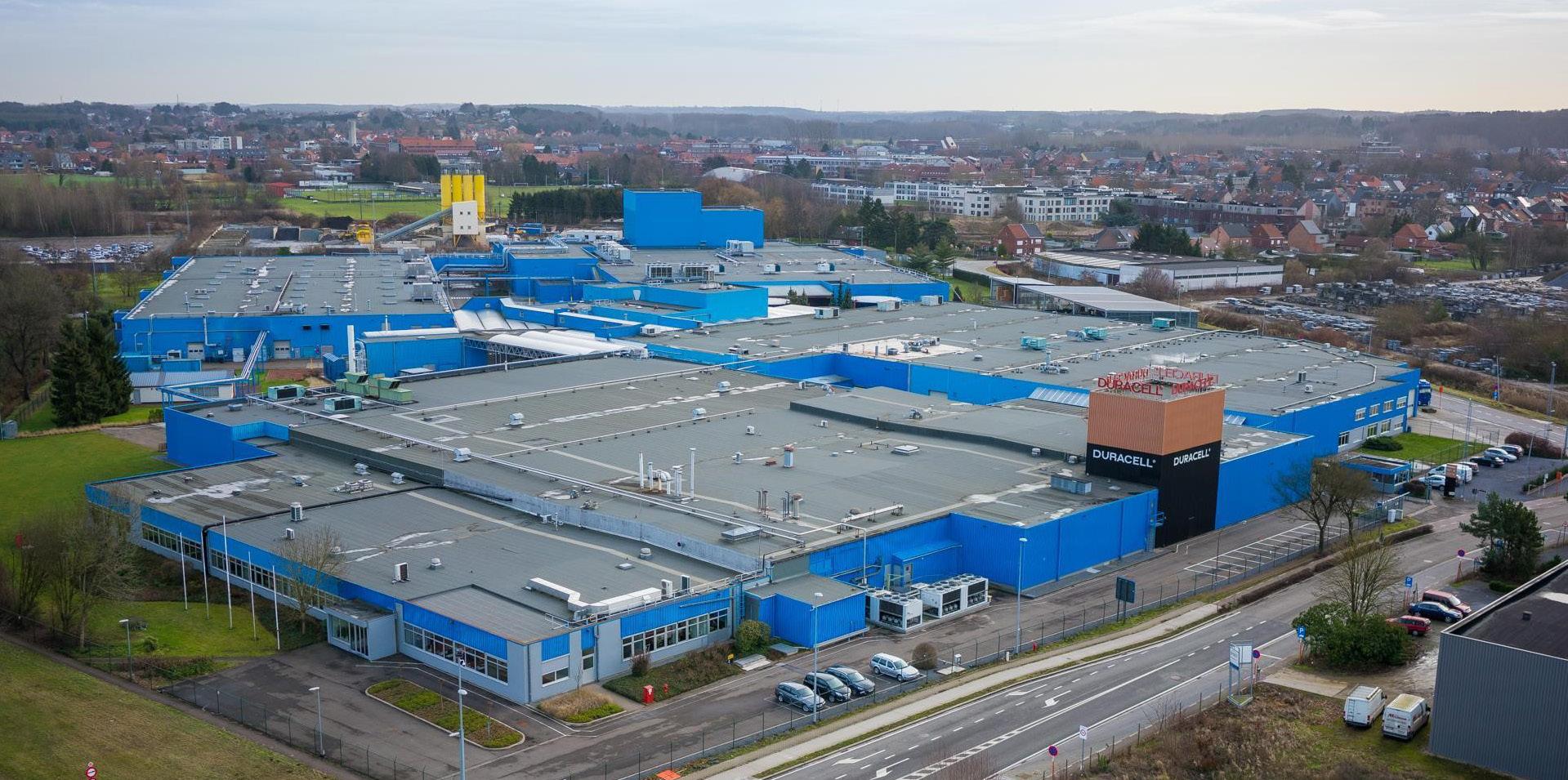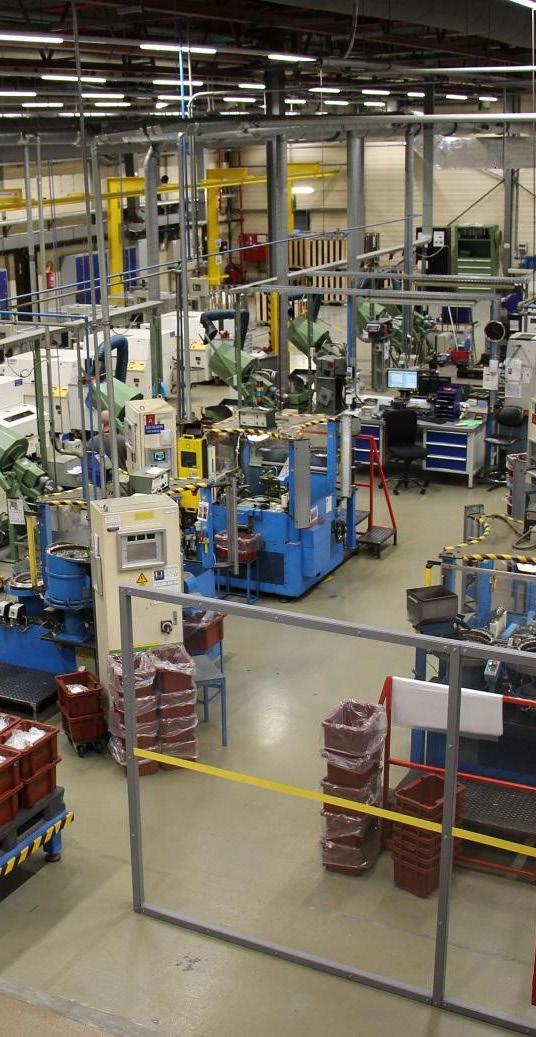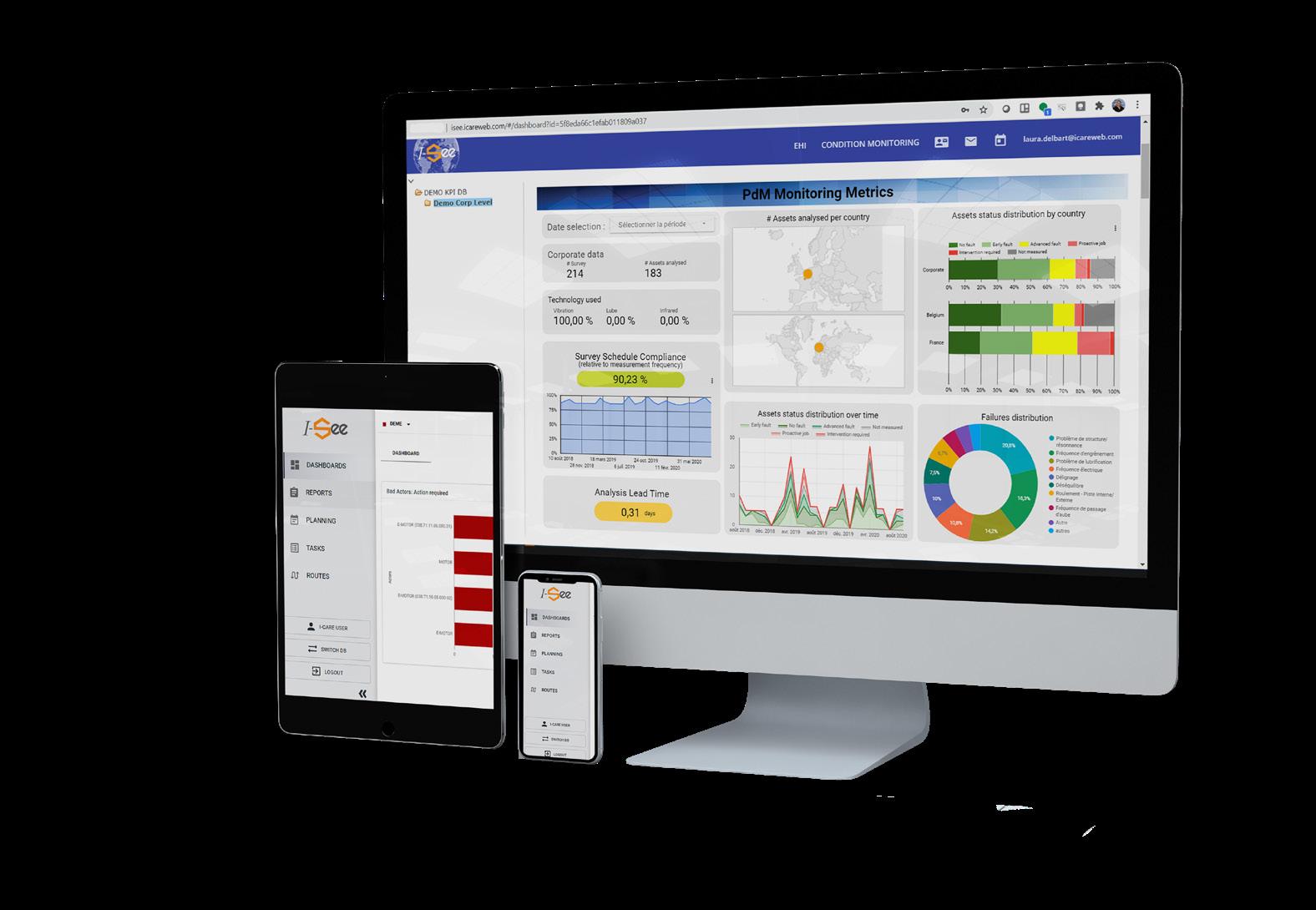
7 minute read
Duracell
DURACELL SAFEGUARDS COMPETITIVENESS THROUGH DIGITISATION
DURACELL COMMITS TO ‘PAPERLESS’ PRODUCTION AND MAINTENANCE
Advertisement
Production facilities within multinationals must constantly fight for their existence. That is why Duracell Belgium decided to go for digitalisation. Thanks to process optimisation and the implementation of a coordinating management system, the factories not only achieved the status of ‘Factory of the Future’. They also succeeded in reducing the maintenance capacity to a single day shift.
Duracell is the world’s leading producer of consumer batteries and a leading manufacturer of high-quality alkaline, specialty and rechargeable batteries. Since 2016, the multinational has is part of Warren Buffet’s Berkshire Hathaway Group. It employs more than 3,300 people worldwide. Its products are made in factories in the United States (3), China (2) and Belgium (2). “Our country is indeed the hub for supply in Europe, Africa and even part of Asia,” says digitization project leader Paul Nuyts. “In Aarschot we manufacture the batteries; in Heist-OpDen-Berg they are labelled and packaged. That is why we are working hard to secure our sites in Belgium on long term. Unfortunately, high labour costs throw a spanner in the works. In 2016, our costs were 25 to 30% higher than in the Duracell plants in China.”
Logical transition
In order to close this financial gap, the Belgian management decided to focus on automation and digitization. “This further transition to Industry 4.0 was a logical choice because we were still working extensively with paper documents at the time,” says Paul Nuyts. “Our factories were struggling with the Excel syndrome: spreadsheets were used for absolutely everything. The result was a confusing tangle of information in which nobody could see the wood for the trees. Multiple versions of documents were circulating and data reached the right people too late or not at all. Moreover, this paperwork took up an enormous amount of time: approximately 10,000 hours per year! And that’s without mentioning the unnecessary costs for paper, storage, copies, ... A second reason why we opted for digitization, was our strong belief in the power of the Internet of Things and metadata. There are now countless examples of factories that have successfully optimized their production and maintenance processes thanks to historic and predictive data, and even artificial intelligence.”
Bottom-up approach
Rather than cram the shop floor with technology straight away, Duracell Belgium first explored the possibilities. This was done both in terms of solutions and users. “A smart move,” according to Arnold De Ploey, Expert Director Data integrated Digital Workplace at Devoteam. “It makes little sense to impose technology from above, especially in production and maintenance environments where not everyone is used to working with computers. We often
— PAUL NUYTS
Digitization project leader Duracell

see that an investment does not pay off because the users do not see the added value of the solutions.” Paul Nuyts: “To prevent this, we gathered a multidisciplinary team of volunteers. They examined how we could digitize and, above all, how we could simplify the processes. The latter is a crucial condition for a successful transition to industry 4.0.
Communicating in two directions
Only a year later, the search for the actual technology began. “We wanted to link intelligence to maximum ease of use,” Paul Nuyts explains. “An umbrella system where all the data comes together seemed indispensable to us. Logically, this system would have to communicate with the applications that were already in use at the time: Microsoft 365 with SharePoint, SAP for production planning and maintenance, our Warehouse system and our MES. That is why we were looking for a partner who could work out the best solution for us. So we finally chose service integrator Devoteam, who suggested linking everything via the Ometa platform.” All those involved - from management to the shop floor - have access to all the information that concerns them. When users enter certain data, they will also know what has been done with it.” Paul Huysmans, department leader at Duracell, responds: “For maintenance activities, this is a huge advantage. When people on the shop floor indicate that a defect is imminent, they are automatically informed of the action taken by the maintenance department. It seems trivial, but in practice it has considerable positive effects. After all, people fail to pass on such information if they are not informed that any action has been taken.”
— PAUL NUYTS
Digitization project leader Duracell
Huge profits
“In financial terms, we are not only talking about the savings of 10,000 hours per year due to the elimination of paperwork,” says Paul Huysmans. “Maintenance is now carried out by a single team during the weekdays, whereas previously it was carried out on a continuous basis. We were also able to reduce the corrective maintenance interventions from an average of 500 to 35 per day per line. In addition, maintenance is now cycle-based instead of time-based. Concretely, we no longer replace parts after a predetermined period, but when SAP indicates that a certain number of operating hours has been reached. The Ometa platform takes care of providing SAP with the machine cycle data. Thanks to this, we have succeeded in our goal to eliminate 250.000 working hours and save a couple of hundred thousand Euros on parts. Of course, this progress also has a positive effect on overall productivity, including less machine downtime. We have gained about 4 %, which now gives us a productivity rate of 84 % and have caught up with a large part of our backlog with China. More than that, the group’s management has therefore decided to follow Belgium’s example and implement a similar digital rollout in all plants.”
Notification, action, reaction
Reducing the maintenance department to a single day shift may seem a bold move at first glance, and one that entails considerable risks. “Such an evolution is only possible if potential defects are reported before they actually occur”, says Paul Huysmans. “Moreover, the reaction must be prompt and precise. Thanks to digitalisation, this works perfectly. If the operators hear or see anything suspicious, they report it via their own Sharepoint page. Also interesting is that they can make an immediate suggestion for action. If a bearing is vibrating, for example, they note: lubricate. This little extra makes the operator feel valued, knowing that his knowledge and experience matter. If he doesn’t know what’s going on, he can document his report with photos. All this results in faster interventions because the maintenance department often immediately understands what the problem is. This way, the technicians can immediately take the right tools and parts with them. Because Sharepoint is linked to SAP, everything can be planned very quickly. Once the intervention has taken place, the maintenance technician notes the actions taken in his Sharepoint page. The interconnection of the software programs then ensures that the operator is informed of the work carried out.”
One step further
Thanks to this approach, corrective maintenance in Duracell’s Belgian plants is kept to an absolute minimum.
“We mainly carry out preventive and conditioned-based maintenance”, Paul Huysmans clarifies. “The aim is to ensure that the installations are always running in perfect condition in order to avoid unexpected machine failures. Every technical anomaly is a warning sign: leaks, suspicious noises, a loose protective cover, a defective electrical emergency stop, abnormal pollution, etc.” Paul Nuyts continues: “Thanks to the efficient reporting system, we can nip a lot of defects in the bud today. The intention, however, is to go a step further by using the metadata. Previously, the spreadsheets were thrown in the bin after the maintenance intervention. Now we want to use this information to create histories and logbooks. In time, these will allow us to predict defects even before they occur. Or monitor and optimize the productivity of the lines through benchmarking. In the near future, we would also like to test the possibilities of artificial intelligence.”
Opting for external expertise
A nice side effect of this digitization is that Duracell is now more open to the expertise of third parties. “We used to think we knew everything best,” says Paul Nuyts. “Now we realize that a partnership with innovative external parties can have a lot of added value. Especially in the current context of technology evolving at a lightning pace. In 2016, the digitization team set the following ambition: ‘as soon as a Duracell employee enters the company, he should be able to perform his task as efficiently as possible as all information is available at the right time, in the right place and in the right form’. Thanks to the move to digitalization, we can achieve this ambition.” ■
Read on ap-magazine.eu








